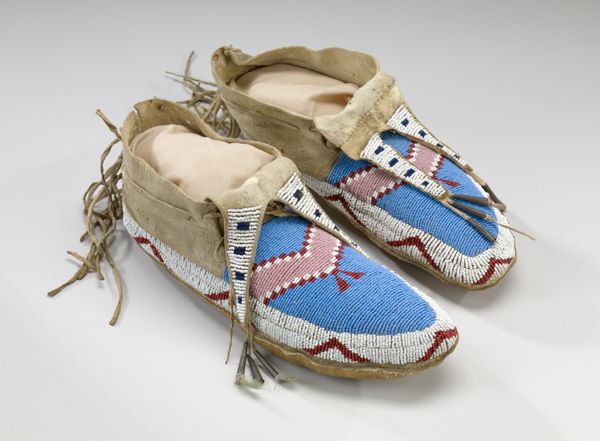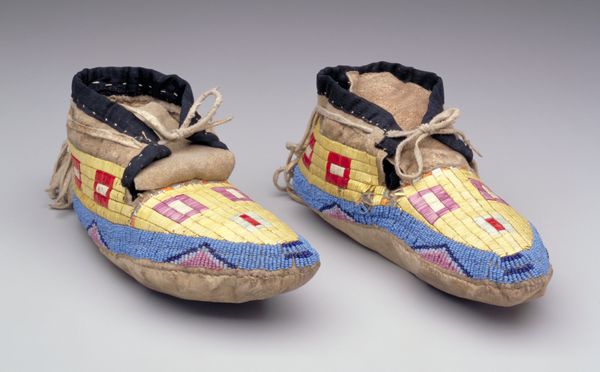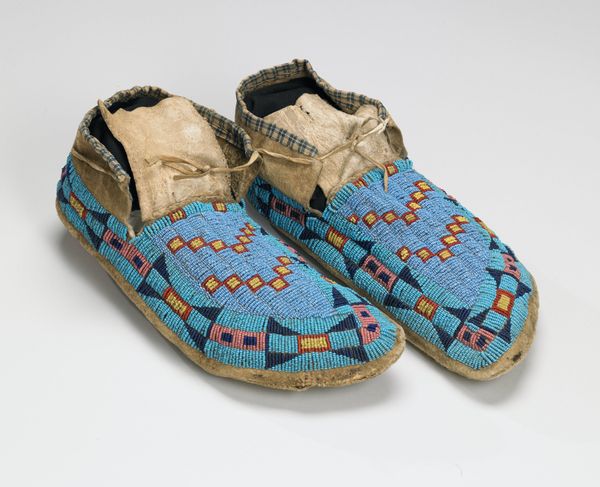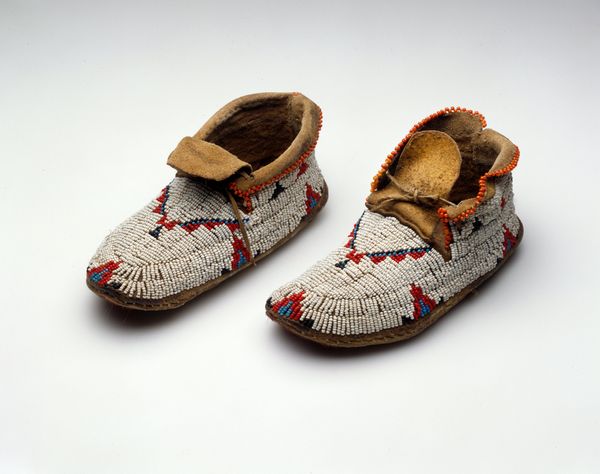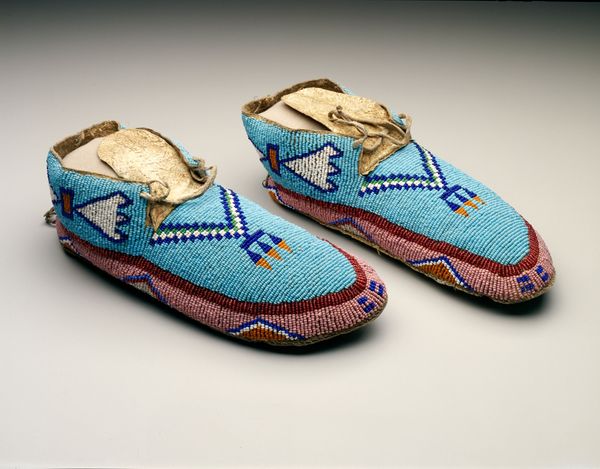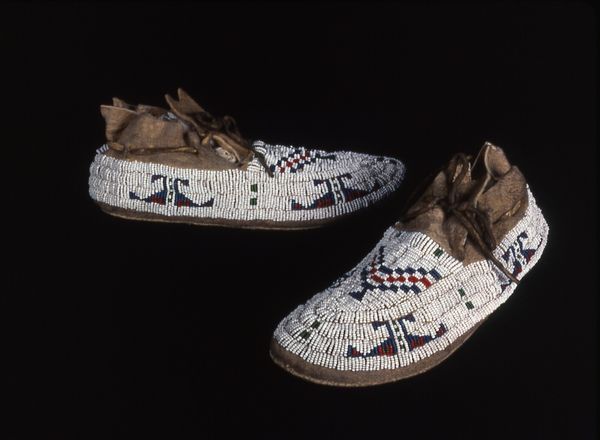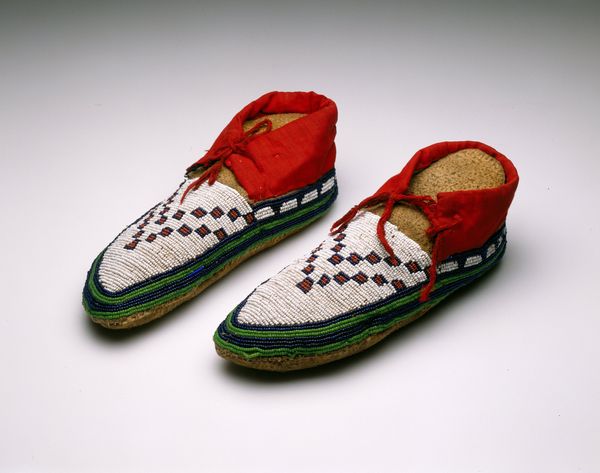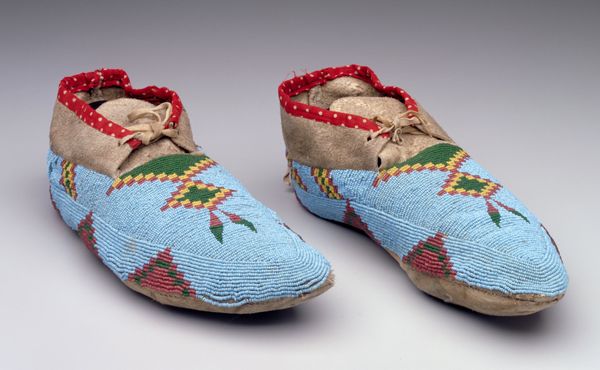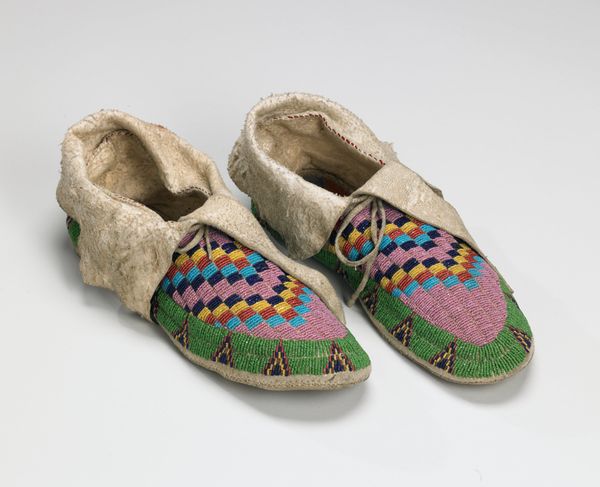
textile
#
textile
#
geometric
#
product photography
#
indigenous-americas
Dimensions: 11 1/2 x 4 x 4 in. (29.21 x 10.16 x 10.16 cm) (a, left)11 1/2 x 4 x 3 1/2 in. (29.21 x 10.16 x 8.89 cm) (b, right)
Copyright: Public Domain
A’aninin, also known as Gros Ventre, made this pair of moccasins using hide and glass beads. The A’aninin people, who lived on the northern plains of what is now Montana, were renowned for their intricate beadwork. Looking closely, we can see geometric patterns made with white, red, pink, and blue beads. The designs may carry symbolic meanings related to the A’aninin culture, beliefs, and social structure. Footwear like this reflected the wearer's identity and status. The arrival of European traders in the 18th and 19th centuries brought glass beads to the A’aninin, replacing traditional materials like porcupine quills. This trade introduced new colors like the bright blue seen here, influencing artistic expression. Museums play a role in preserving and showcasing these objects, providing a space for cultural exchange and historical understanding. Studying historical records, ethnographic studies, and the oral traditions of the A’aninin helps us to understand the significance of these moccasins. Art helps us engage with social structures in the past, providing a visual record of cultural traditions.
Comments
No comments
Be the first to comment and join the conversation on the ultimate creative platform.
